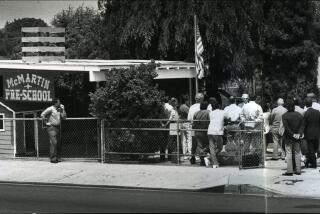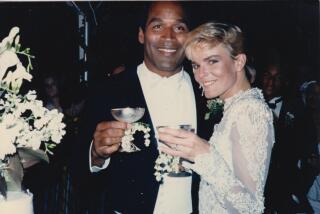THE O.J. SIMPSON MURDER TRIAL
UCLA law professor Peter Arenella and Loyola University law professor Laurie Levenson offer their take on the Simpson trial. Joining them is Los Angeles defense attorney Jill Lansing, who will rotate with other experts as the case moves forward. Todayâs topic: Brian (Kato) Kaelinâs testimony about Simpson.
PETER ARENELLA
On the prosecution: âFor two days, Marcia Clark treated Kaelin in substance as a hostile witness because he refused to admit that Simpson was upset with Nicole the night of the murders. When she secured permission to treat Kaelin in fact as hostile, her anger and leading questions finally elicited Katoâs admission that Simpson was âsomewhat upset.â She also cleverly used a recital photo to show Simpsonâs left hand was unmarked hours before the murder.â
On the defense: âRobert Shapiro refocused the juryâs attention on the one area of Kaelinâs testimony that most helps O.J.--that Simpson acted like an innocent man the night of the murders and did not ask Kaelin to lie for him the next day. While Kato finally conceded that Simpson was upset at Nicole after the recital, on recross he acted out O.J.âs frustration in a performance that will not enhance his acting career but minimized the damaging impact of his concession.â
LAURIE LEVENSON
On the prosecution: âClark did exactly what she had to do--take Kaelin as a hostile witness and suggest that after he was contacted by the defense team he tried to give information that helped his friend, Simpson. Nonetheless, because he gave a statement to the police before he knew Simpson was a suspect, he is locked into his testimony that he cannot provide an alibi and that Simpson told him that night that his relationship with Nicole was over.â
On the defense: âShapiro tried his best to make Kaelin seem like a nervous but honest witness. He emphasized that even though Kaelin cannot say that O.J. was in his house at the time of the murders, he also does not know that he wasnât. Shapiro also returned to the best evidence Kaelin can provide the defense--that Simpson did not act in an unusual manner on the night of the killings. What the defense must do is convince jurors to disregard the rest of Katoâs testimony.â
JILL LANSING
On the prosecution: âProsecutors, though admonished before the jury for Thursdayâs question about a 1989 beating incident, may feel the gamble paid off. If one can ask improper questions and offer inadmissible photos with little or no consequence, it sends a dangerous message. Their decision to impeach a witness who gave them the window of opportunity, the thump on the wall and the mysterious backpack was a curious one. Do they really want the jury to disbelieve Kato?â
On the defense: âKaelinâs willingness to give testimony that damaged Simpson makes his favorable testimony more persuasive. He portrays a saddened husband and father rather than a man out of control. Clarkâs need to paint Simpson as a bad father seemed unsuccessful, unnecessary and curiously personal. The prosecutionâs admonition for misconduct may convince the jury that âthese things happenâ and may diminish damage from the earlier defense sanction.â
Compiled by TIM RUTTEN / Los Angeles Times
More to Read
Sign up for Essential California
The most important California stories and recommendations in your inbox every morning.
You may occasionally receive promotional content from the Los Angeles Times.










